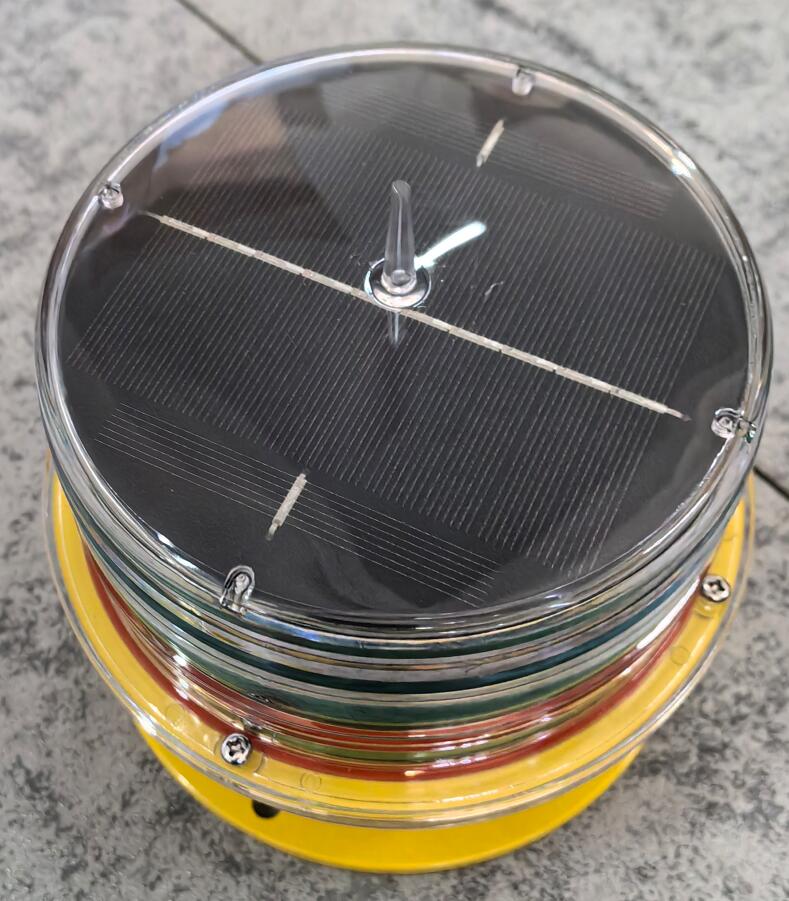In the vast expanse of the sky, where aircraft soar and navigate through the clouds, there is a silent yet crucial player that ensures safety and visibility - the aviation light. Traditionally, these lights have been powered by various means, but in recent years, a revolutionary technology has emerged: solar powered aviation lights.
Solar powered aviation lights are a remarkable combination of innovation and sustainability. Harnessing the power of the sun, these lights offer a reliable and eco-friendly solution for enhancing aviation safety. The concept is simple yet highly effective. Solar panels on the lights capture the sun's energy during the day and store it in batteries. At night or in low-light conditions, the stored energy is used to power the light, providing a bright and consistent source of illumination for pilots and air traffic controllers.

One of the key advantages of solar powered aviation lights is their independence from traditional power sources. Unlike conventional lights that rely on electricity from the grid or generators, solar lights are self-sufficient. This not only reduces the cost of installation and maintenance but also makes them ideal for remote locations where access to power is limited. For example, in areas far from urban centers or on isolated islands, solar powered aviation lights can be easily installed without the need for extensive infrastructure.
| Solar Powered Aviation Light | 4R5E |
Another significant benefit is their environmental friendliness. As the world increasingly focuses on reducing carbon emissions and promoting sustainable practices, solar powered aviation lights offer a greener alternative. By relying on renewable energy from the sun, these lights do not contribute to air pollution or greenhouse gas emissions. This makes them an important step towards a more sustainable aviation industry.
The reliability of solar powered aviation lights is also a major selling point. High-quality solar panels and advanced battery technology ensure that these lights can operate continuously even in adverse weather conditions. They are designed to withstand extreme temperatures, high winds, and heavy rain, providing consistent illumination and ensuring the safety of aircraft. Additionally, many solar powered aviation lights are equipped with intelligent control systems that can adjust the brightness and duration of the light based on the ambient conditions, further enhancing their reliability and efficiency.
In terms of performance, solar powered aviation lights are on par with or even better than traditional lights. They offer a bright and clear source of illumination that is easily visible from a distance. This is crucial for pilots, who need to be able to see the lights clearly to navigate safely. Moreover, the long lifespan of solar panels and batteries means that these lights require less frequent replacement, reducing downtime and maintenance costs.
The adoption of solar powered aviation lights is not only beneficial for individual airports and airfields but also for the entire aviation industry. As more and more airports and air navigation service providers recognize the advantages of this technology, the demand for solar powered aviation lights is expected to grow rapidly. This will not only lead to cost savings and environmental benefits but also drive innovation in the field of aviation lighting.
In conclusion, solar powered aviation lights represent a significant step forward in the pursuit of sustainable and safe aviation. With their independence from traditional power sources, environmental friendliness, reliability, and excellent performance, these lights are set to play an increasingly important role in the skies of the future. As the aviation industry continues to evolve and embrace sustainable practices, solar powered aviation lights will undoubtedly be at the forefront of this transformation, illuminating the way for a greener and safer aviation future.